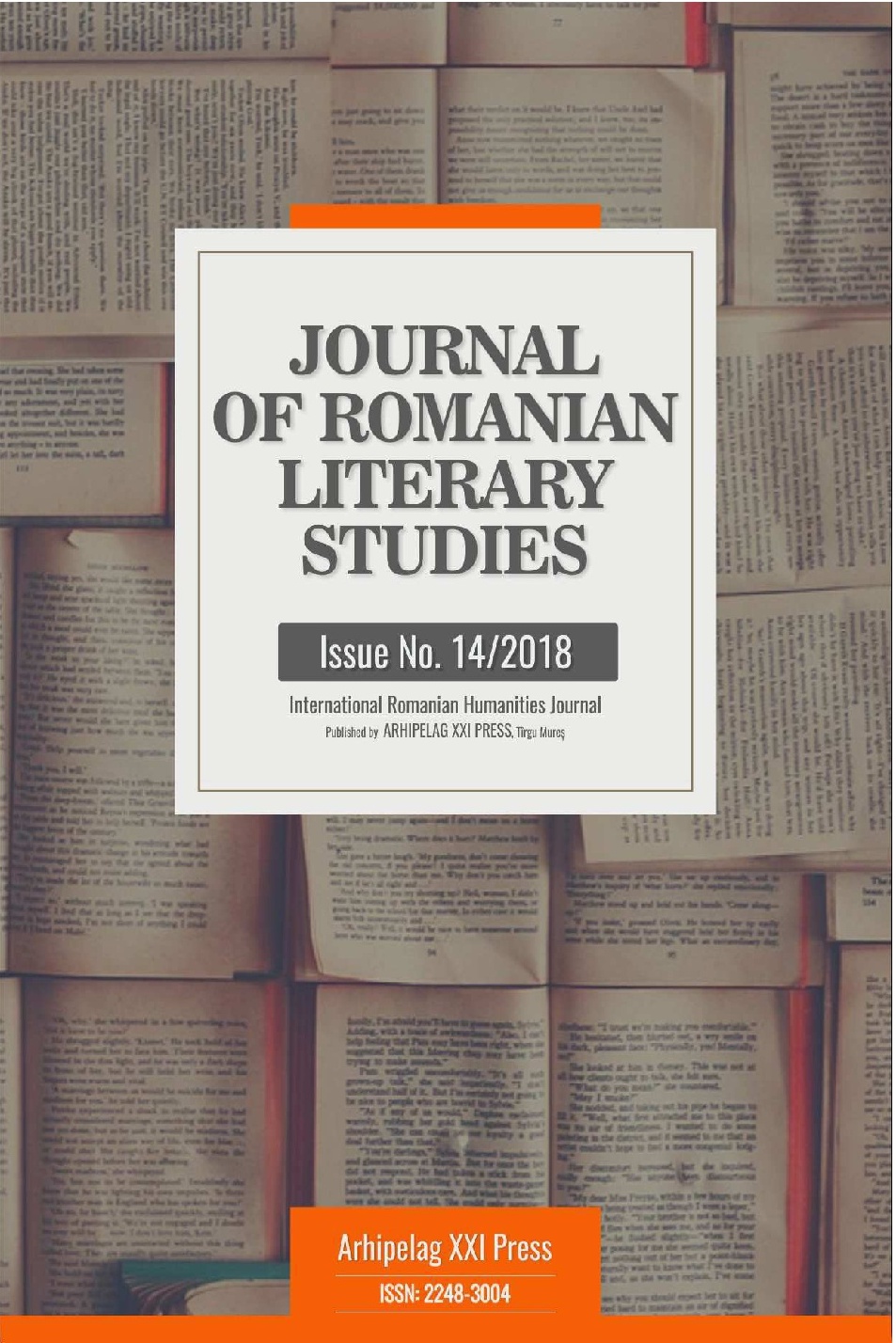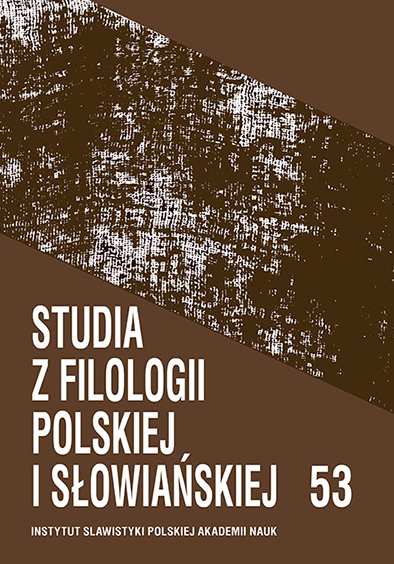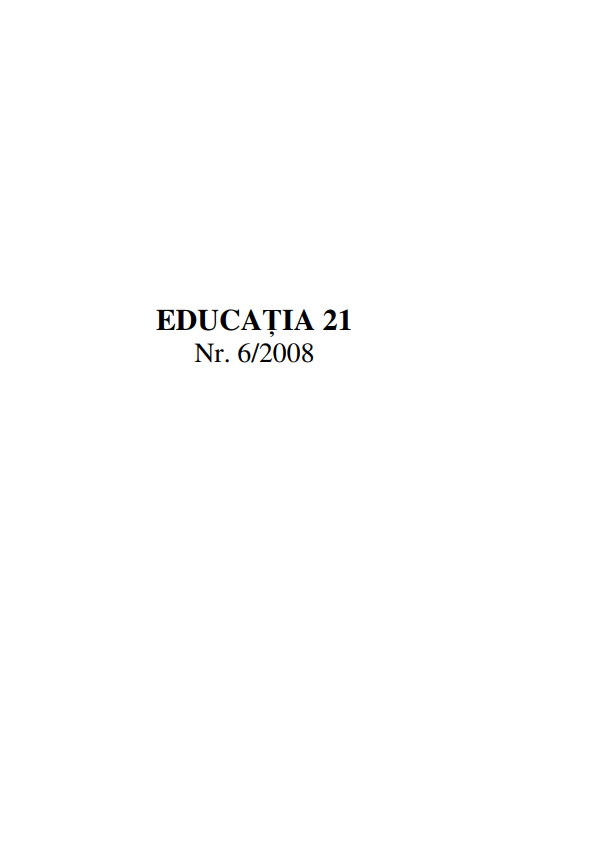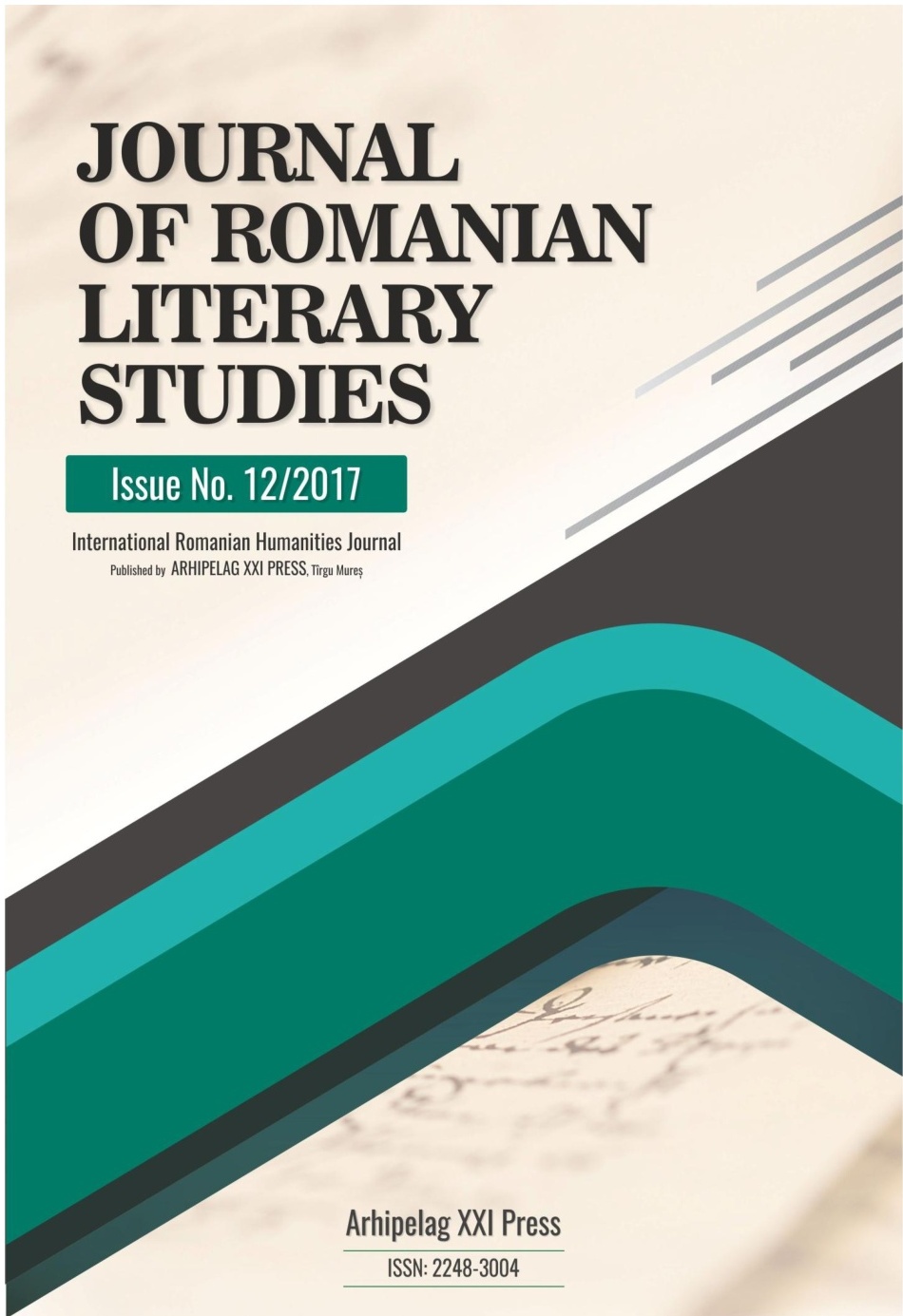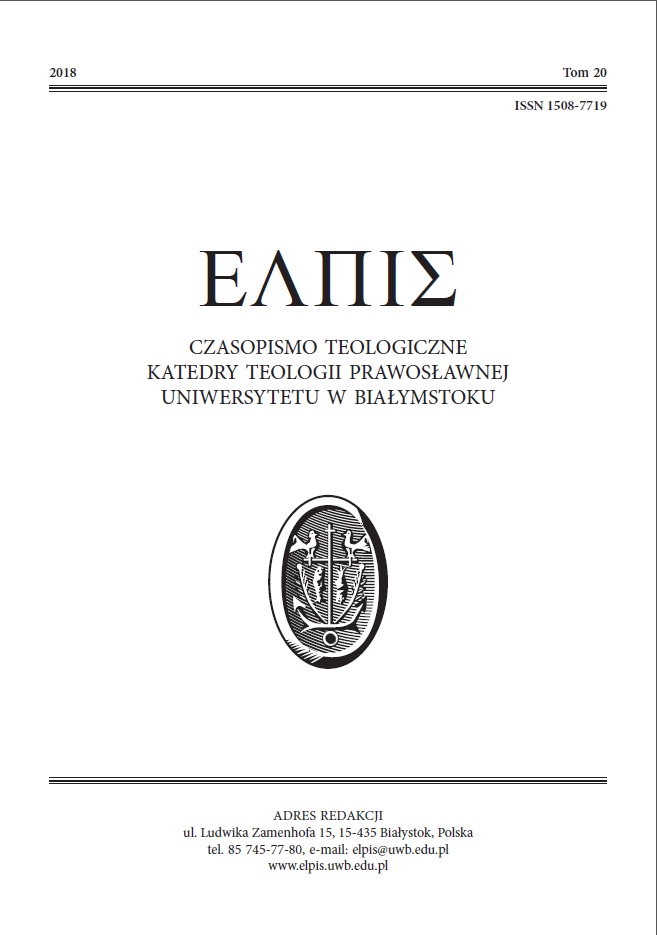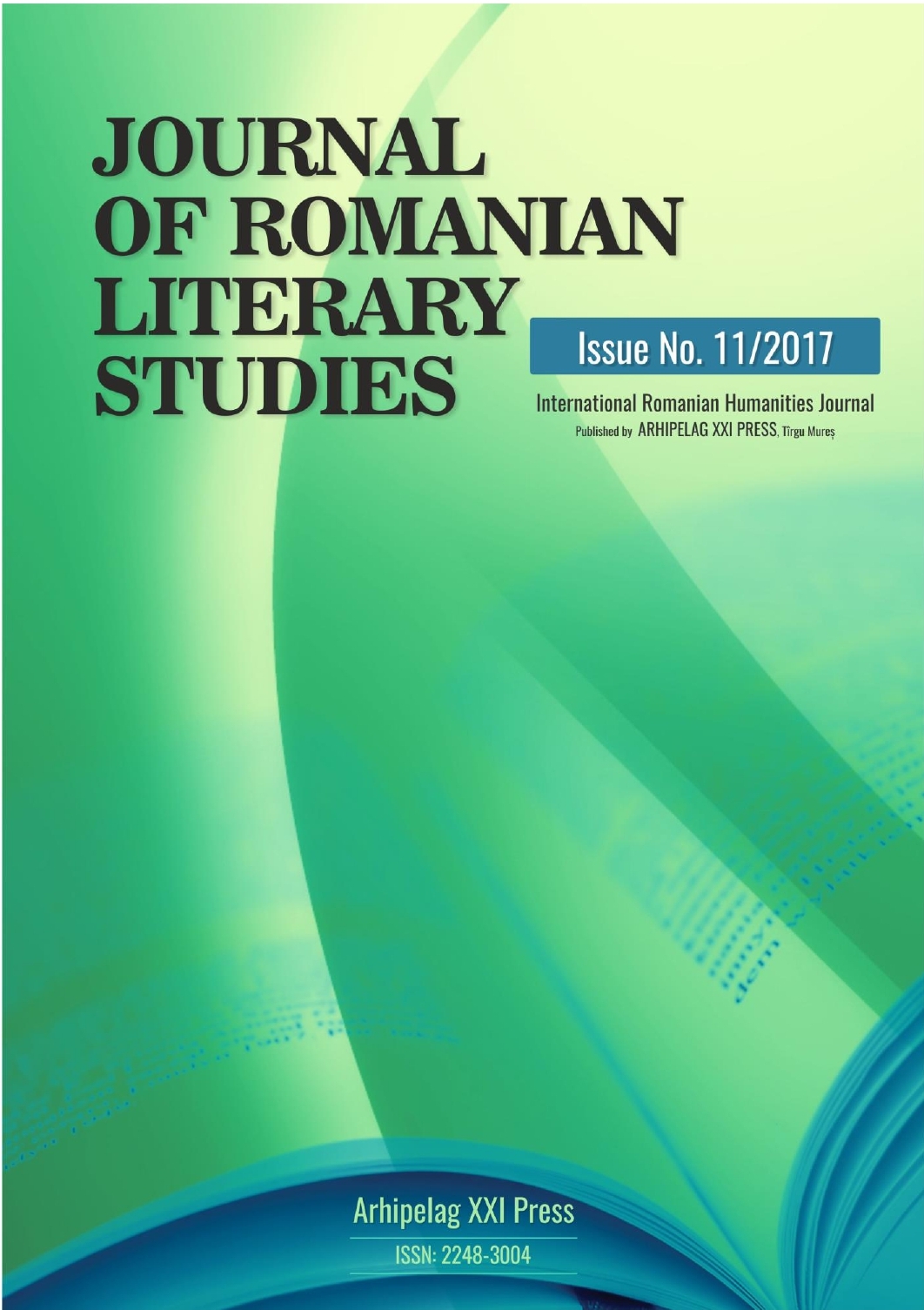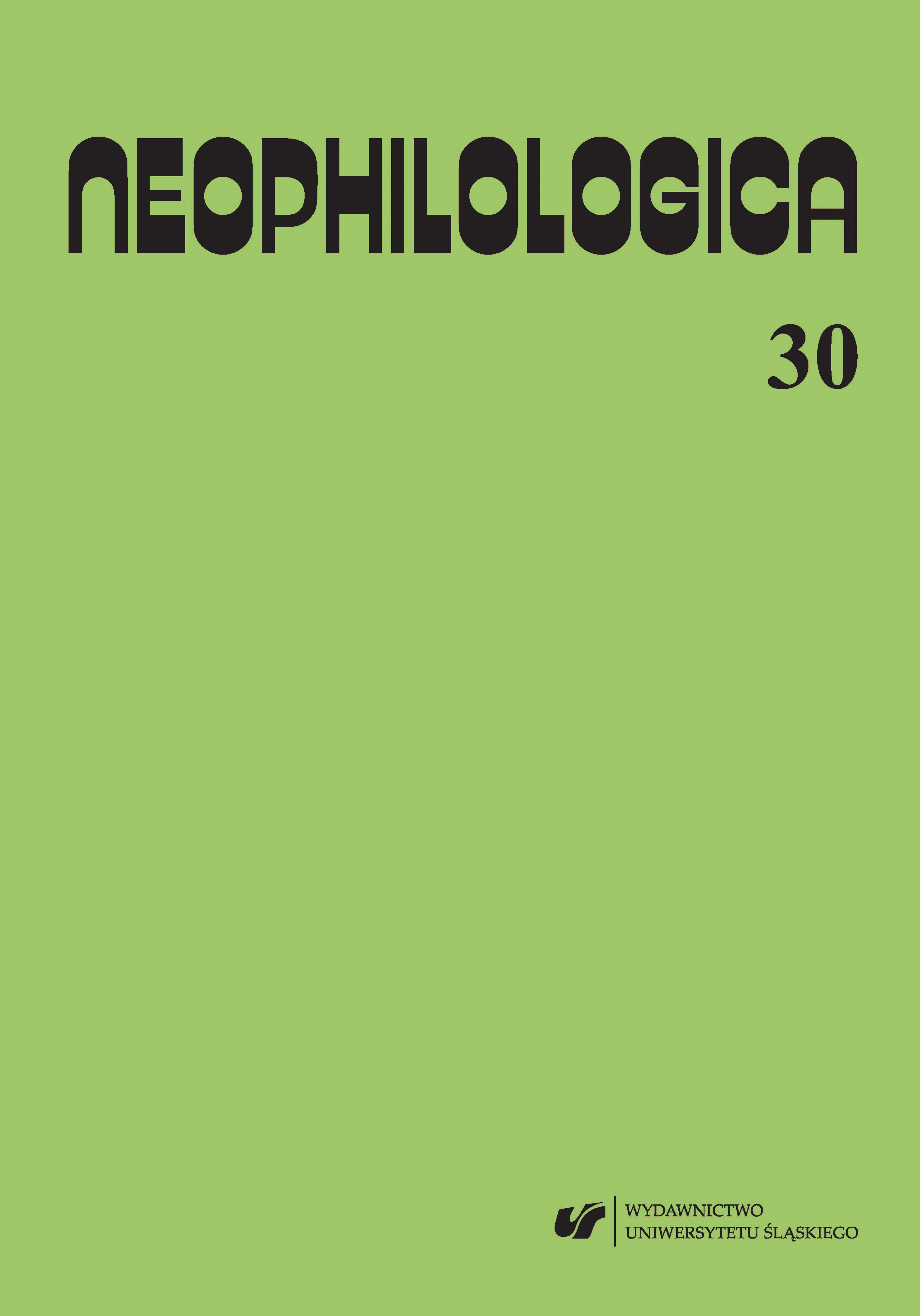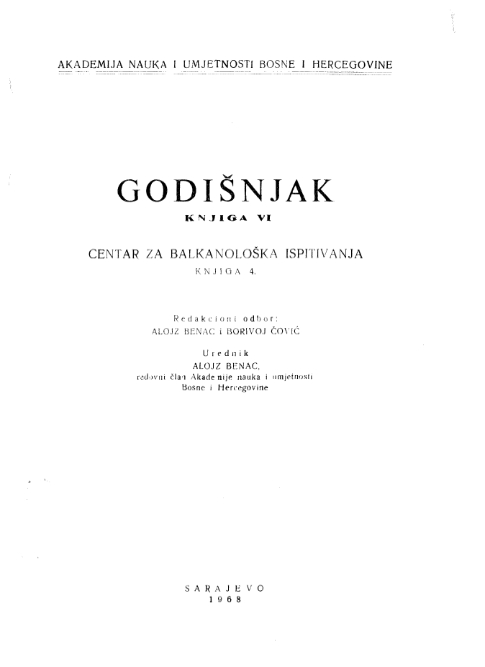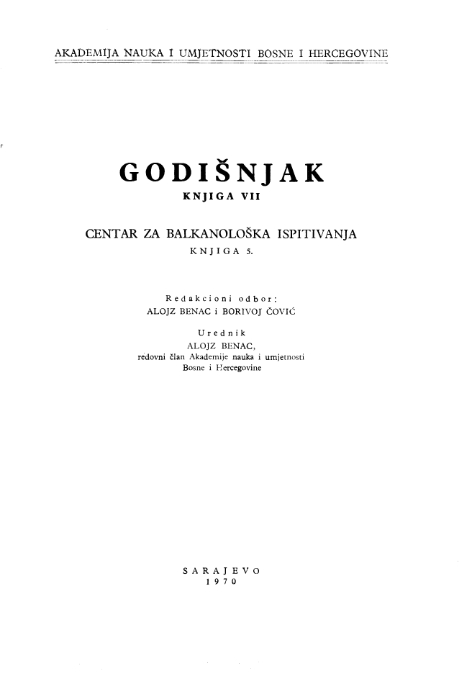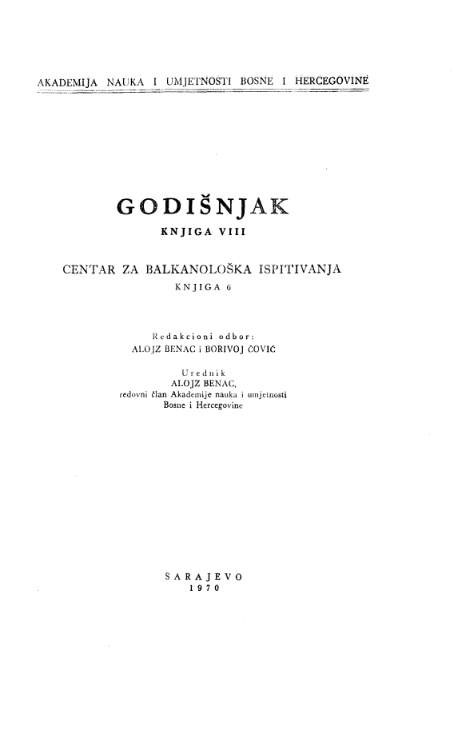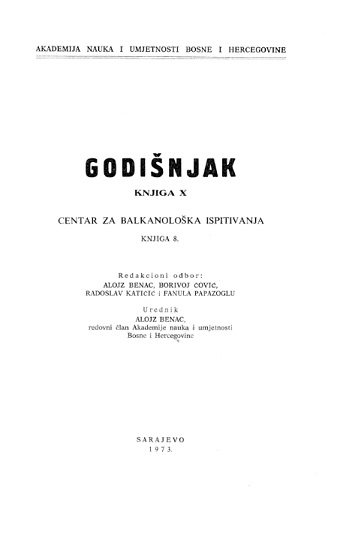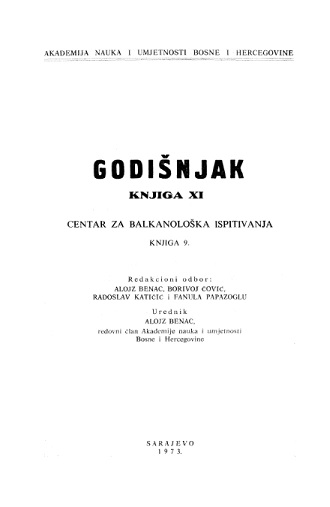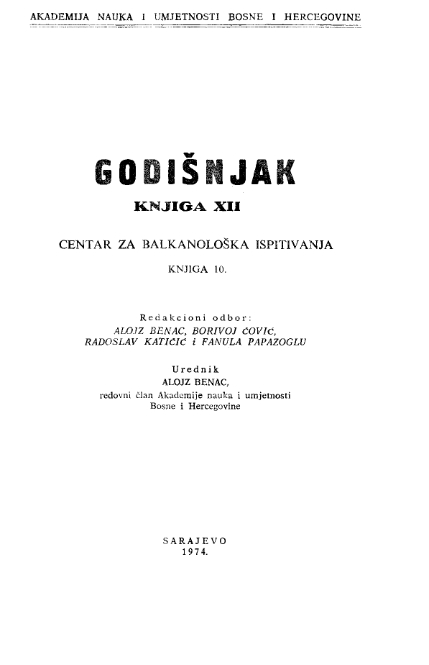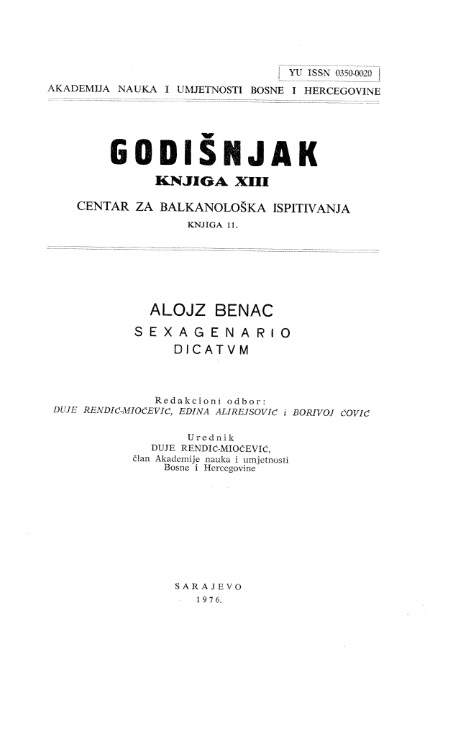Author(s): Bojan Čop / Language(s): French
Issue: 10/1973
Pošto smo pregledali izoglose koje vežu samo grčki jezik i italsku grupu, treba razmotriti i sve izoglose koje, osim grčkoga jezika i italske grupe, obuhvataju i jedan ili vise drugih jezika. Grupe izoglosa koje su dobijene na taj način i koje nas zasad intersu ju jesu sledeée: I a) Grcko-italsko-keltske izoglose: (1) gr. phyllon, lat. folium, kelt. *beljon „list“ ; (2) iterativ *itäye- „hodati“ (gr. itëtéon i.dr., lat. itö, ir. ethaid „ide“; (3) *el-er- „vodna ptica“ (gr. elörios, lat. olor; kimr. alarch itd.) ; (4) *er- „jarac, ovca i.sl.“ (gr.-ital. *eri- u gr, ériphos, lat. aries; gr.-kelt. sa sufiksom *-bhojä-: ir. heirp, erb(b) ltd.); (5) * gh o rto - „ograda“ (gr. kh ô rto s, lat. h o rtu s, gal. g o r to - itd.); (6) * q r i-n ä - „rastaviti“ (gr. k r in d , lat. cernô, kimr. g o -g ryn u ) ; (7) *m e (m )s - ro - „mesni deo tela“ (gr. mêros, lat. membrum, ir. m i r ) ; (8) * ok (a ) r i- „šiljak“ >:(gr. âkris. lat. st. o c r is; umbr. ocar ocrer, ir. o c h a ( i) r ) ; (9) komparativ *plëis .„vise“ (gr. hom. plées at. p le in , lat. p lïs -im a , ir. lia ) ; (10) komparativ * p riyo s-, *pris (lat, p r io r , prisons, p r îs tin u s , p r im u s , gr. p r tn , ir. r e -m -) ; (11) koren *sqëi- „levi“ (grč. ska iô s = lat. sc a e v u s ; ir. ciotach i.dr.); (12) koren * (s )~ qerïbh- „grepsti“ (gr. skd rïp h o s, lat. s c r ïb ô ; ir. s c r ïp (a ) id ) ; (13) * sta g -n - „kapanje“ (gr. stagön, lat. sta g n um , kimr. ta e n ) ; (14) * strê-n o - * str ë -n u - „naprezanje“ (gr. strënés, strënôs i.dr., lat. strënuus, kimr. tr in ) ; (15) *sweid- - e s - „znoj“ (gr. hidrôs, îdos, lat. südor, kelt. *swisso~) ; (16) gr. h ÿ p tio s ,,ležeći na ledima“, lat. su p ïn u s, suppus, ir. fä e n , fô e n ; (17) * tem -d o „režem“ (gr. tén d ô , lat. tondeô, ir. ro -s -te in d ) ; (18) lat.-gr. *we -qwsp -ero - „večer“ (gr. hésperos, hespéra, lat. vesper, - a ) i kimr. ucher (iz * a u - itd.); (19) *wïsàs „otrov“ (gr. iôs, lat. v iru s , ir. f i ) ; (20) *w rä d -m o - i.sl. „koren, grana“ (gr. rhâdamnos, lat. râm u s, kimr. g r e d d f) ; (21) * e n ( i) s e qw- „pripovedati“ (gr. ennépô, ënispeïn, lat. insece, in q u am , ir. in-sc e ) ; (22) * tr i-b h u - „trostruk“ (gr. tr ip h y â n , trip h y é s, lat. tribus, ir. tr e b ) ; (23) sufiks komparativa -te ro - kod prisvojnih zamenica: gr. hëméteros itd., lat. noster, vester, ir. se thar, a th a r ; (24) brojevi „70“ (Godišnjak VIII/6, 103) ir. sechtmogo, „80“ ochtmogo; uticaj seksagezimalnog sistema Babilonaca. Ove se izoglose raspadaju često na dva delà: grčka i italska strana pokazuju vécu medusobnu srodnost u odnosu na keltsku stranu. I b) Grčko-italsko-keltsko-germanske izoglose: Veé u poglavlju I a) pronašli smo nekoje srodnosti sa germanskim jezicima, tako pod br. 2 (iterativi na *-tâye~), 3 (*el- „vodna ptica“), 17 (?), 19 (event, ags. wir), 24 (uticaj babilonskog seksagezimalnog sistema na germ, brojke, ali ipak sa drukčijim posledicama). Dalje: (25) *bhägolä- „bukva“ (gr. phëgâs, lat. fägus, gal. *bägos, germ. *bokô) ; (26) *daiim „suza“ (gr. ddkry, lat. lacrima, ir. der itd., got. tagr itd.); (27) *pehmä i.sl. „dlan“ (gr. palâmë, lat. palma, ir. läm, stnem. folma itd.); (28) *nebh-el- „magla“ (lat. nebula, gr. nephélë; stnem. nebul i.dr., ir. nël) ; (29) gr.-lat. *sed-lä — kelt.-grm. *sed-lo- „sedište“ (gr. hellä, lat. sella; got. sitls, gal. sedlon) ; (30) *sem- + sufiks *-- „ravan; jednak, sličan“ (gr. komatös, lat. similis, simul, umbr. sumel, got. simlë i.sl., ir. sam(a)il) ; (31) prezent *regö „ispravljam“ (gr. o-régô, lat. regö, ir. reg-, rig-, germ. *rikan u iterativu *rakjan, part. *rexta-) ; (32) *tur-b-ä, *tur-b-o- „nered, zbrka“ (gr. tyrbë, syrbë, lat, turba; kimr. twrf, stnord. thorp). Pokadkad grčki i italski članovi ovili izoglosa predstavljaju uže srodstvo, s jedne strane, a germanski i keltski, s druge strane. Tako ove izoglose potvrđuju rezultate obaju članaka iz Godišnjaka VII/5 i VIII/6. I c) Grćko-keltske izoglose : Ove su tkim. prekinute izoglose: prelazni član — jezik koji u histor. doba nalazimo medu pomenutim jezicima u ovim izoglosama nema predstavnika. (33) gr. drakos „neka mahunarka“ i gal. > lat. arinca „vrsta žita“ (?); (34) *ardi-s „siljak“ (gr. drdis, ir. aird) ; (35) *aw-elo- „pireci“ (gr. della, kimr. awel i. dr.); (36) *dä-mo-s „odelenje naroda“ (gr. demos, ir. däm) ; .(37) *de}<si-wö-s „desni“ (gr. dexiös, gal. Dexsiva dea) ; (38) *dri-wo- „uzburkan, strastan, žestok“ (gr. thriesai, thriambos, thriai, bret. dreo) ; (39) gr. géranos, kelt. *garanos „ždral“ ; (40) *g«ou-kolô~s „govedar“ (iz *gtl'ou-qwolô-s disimilirano) (gr. boukôlos, ir. bûachaill, kimr. bug a il) / (41) *g a u -ro -s „junačeći se, veseo“ (gr. gaüros, ir. güaire) ; (42) * y o r k - „životinja’iz grupe srna“ (gr. d ô r x , z ô r x , k im r . iw rch ) ; (43) * q ru -n d - „iskrivljen“ (gr. k o k r y n d a k o i kimr. cru n n , crwnn i. dr.); (44) gr. kêrdos „dobitak, korist“, ir. cmi'„umetnost, obrt“ ; (45) * q is-tä „kos“ (gr. kistë, ir. cess) ; (46) *kuwos (ntr.) „zametak“ (gr. k y o s, kimr. c yw ) ; (47) * qld-ro-s „komad drveta“ (gr. klëros, ir. clâ r itd.); (48) * k n â -m - ili * k y -m - (dugo -y .-) ..deo noge“ (gr. kn ém ë, kn ëmîs, knëmoi, ir. c n â im ) ; (49) *quré -m n o -m „stabio drveta“ (gr. p rémn o n , ïr. crann, kimr. p r e n n ) ; (50) prezent *li-n-q«’- y ô „puštam, ostavljam“ (gr. Itssômen, ir. lëic id ) ; (51) gr. lé skhê „počivalište“, ir. lese „piger“ itd.; (52) *loq-sô- i *leq-s- „savijen“ (gr. loxôs = ir. lose; gr. lé kh ris itd., kimr. Uechwedd) ; (53) *m a -ti- „velik; dobar“ (gr. m a tîs, m d si, kelt. *m a tis) ; (54) *m ô -ro -s „velik“ (gr. -moros, kelt. mâros) ; (55) gr. mélos ntr. ,,ud, clan“, kelt. *m el-s-à „articul'us, iunctura“ (bret. m e ll itd.); (56) * 5w y o -m „jaje“ (gr. ô iô n , kimr. w y ) ; (57) * n ig " -y ö „perem“ (gr. n iz ô , ir. n ig id ) ; (58) *pérK0-$ „šaren“ (gr. pêrkos, p érkë , p e r k d z ô , ir. erc, kimr. erch) ; (59) *stilp]b- „blistati se“ i *stilp~nô- „sjajan, blistav“ (gr. stîlbô, stilpnôs, ir. sell, kimr. s y llu ) ; (60) * SK (h )id -y ô „režem, cepam“ (gr. s k h izô , bret. sk e ja ) ; (61) gr. h a n d â n ô „svidam se“, kimr. chutant „želja“ (?); (62) *seghedhlâ „ručica (držak) na plugu“ (gr. ekhêtlë, kimr, h aedde l) ; (63) gr. stérgô „voleti“, ir. sere „ljubav“ — kimr. serch; (64) gr. tênagos „plitka voda itd.“, bret. tn a o u „dolina“, kimr. ty n o (iz *tnagwo~) ; (65) gr. toreüö „klesem“, st. bret. to reu sit „attrivit“ i.dr. ; (66) gr. tr fk h o „ tr y ö “, ir. trog, trü a g „bedan“ ; (67) gr. dgnos „vitex agnus castus“, ir. fä n „obronak“ itd. ; (68) *wer- „naci“ i aorist *we-zvre-t (gr. heur is k ö , heüron, ir. fü a r , r ith ) ; (69) gr. orgé „uzbudenje, strast; gnev“, ir. ferc „gnev“ ; (70) gr. a n â n k ë „nužda, pritisak, prisiljavanje“, ir. ecen, kimr; angen itd. „nužda“ ; (71) gr. b rankhäs „promukao“, ir. b rongide; (72) gr. étnos „kaša od mahunarki“, ir. ei m e „jezgra“. Broj grčko-keltskih izoglosa vrlo je velik; pronašli smo taeno 41 primer; među njima 24 izoglose predstavljaju najpotpunije jednadžbe: grčki i keltski član izlaze iz jeđne i jedine indoevropske dijalektičke reči. Ova suglasnost u oblicima između grčkog jezika i keltske grupe bez sumnje potiče od vrlo intenzivnog jezičnog saobraćaja izmedu ova dva naroda. Ali, ovaj saobraćaj je trajao samo kratko vreme. Treba objasniti kako su ove izoglose nastale. Bez sumnje jezična izmena ne postoji. ako narodi koji govore te jezike ne žive u neposrednom susedstvu, a zna se da Grci i Kelti nikad, ni u historisko ni u predhistorijsko doba, nisu živeli zajedno. Međutim naše izoglose mogu se temeljiti isključivo baš na zajedničkom životu Grka i Kelta u davnoj prošlosti. Stvarno, najbolje je objašnjenje ovih izoglosa ako pretpostavljamo da su Grci nekad, u 2. pol. 3. tis. pre n. e. živeli kratko vreme zajedno sa Keltima, a kasnije odlazili prema jugu i tako ostavili Kelte na starom mestu. II a) Armensko -grčko-italske izoglose: (73) * arq- „štititi, zatvoriti“ (arm. argel, gr. a r k éô , lat. arceô, area, a r x ) ; (74) *ar~mo~, * ar-men - „sklapanje, sklop“ (arm. y -armar , gr. harmos, harmoï, harmôzô , harmonla , hdrm a , lat. armentum, arma ) ; (75) *ar-tu- „sklop“ (arm. a rd , gr. a r ty n , a r ty s , a r tÿ ô , lat. a n u s ) ; (76) * s p (h )6 n g (h )o - s „gljiva, spužva“ (gr. spôngos, sphôngos, arm. su n k /g , lat. fu n g u s ) ; (77) *bhôr „nosač, otimač“ (arm. burr~n; gr. p h ô r = lat. f ü r ) ; (78) * b h ( e) r u g - „ždrelo, dušnik“ (arm. erbuc, gr. p h d r y x itd., lat. fr ü -m e n ) ; (79) *néwo~s „nov“ prošireno sufiksom -ro - (arm. n o r, gr. near os, lat. n o v e r-ca ) ; (80) gr.-lat. *plê- -ro -s „pun“ (Godišnjak VII/5, br. 70) + arm. lir „punoća“ iz * p lê -r i-s ; (81) gr.-lat. * p ö rsö d „napred“ (Godišnjak VII/5, br. 229) + arm. a rr ,,kod, pokraj, pored“ iz *prs- ; (82) * puw-es- ntr. „gnoj“ (arm. h u , gr. p yo s , lat. p ü s ) ; (83) gr. eülëra „uzda“, lat. lö rum „remen“, arm. la r „uže, konopac“ ; (84) * o i-w ä „neka biljka“ (arm. a ig i, gr. 6a, lat. ü v a ) ; (85) gr.-lat. *bhsa~bh- „krhak, lomljiv“ ; „pesak“ (Godišnjak VII/5, br. 51) + arm. a v a z „pesak“ ; (86) sufiks *-î-sk - (gr.-lat. Godišnjak VIII/6, str. 116 + arm. konj. aor i prez.). Retkost tih izoglosa dokazuje da je jezični saobraćaj, počevši od italske grupe prema istoku do armenskog jezika, bio slabiji kao u praveu grcki jezik — keltska grupa. Ponekad grčka i italska strana pokazuju tešnju srodnost medusobno nego prema armenskom jeziku. Ali je grčko-italska strana sigumo mlađa nego armenska. Općenito uzevši ove izoglose mogu se staviti pred grčko-italske, svakako pre god. 2000 pre n. e. Delimično i ove izoglose pokazuju potpunu skladnost; jezični saobraćaj izmedu Armenaca i Italika u ono doba bio je kratak, a vrlo intenzivan. Nastale su kad je italska grupa bila još u susedstvu armenskom jeziku, a to znači doba oko 2500—2400 pre n. e.
More...
